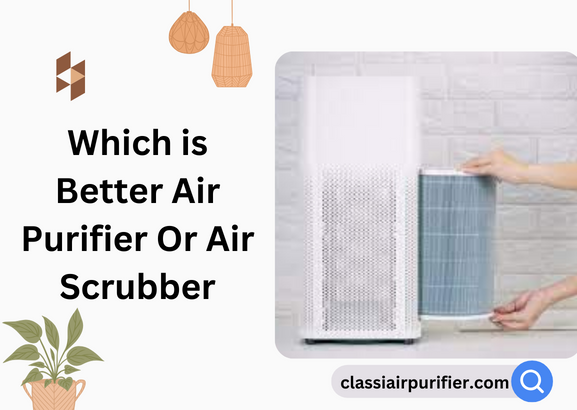To take care of an air purifier, regularly clean or replace the filters and follow the manufacturer’s maintenance instructions. This will ensure the purifier functions effectively and efficiently, providing clean air in your space.
Proper maintenance of your air purifier is essential for its optimal performance and longevity. By following these simple care tips, you can ensure that your air purifier continues to function effectively, removing pollutants and allergens from the air. Regularly cleaning or replacing the filters, depending on the type of filter used, is crucial.
Additionally, wiping down the exterior of the purifier and keeping the surrounding area clean can further enhance its performance. Understanding and adhering to the manufacturer’s specific maintenance instructions is also key. This not only keeps the purifier in good working condition but also ensures the air in your environment remains clean and healthy.
The Importance Of Air Purifiers
Proper air purifier maintenance is essential for optimal performance. Regularly cleaning and replacing filters, keeping the unit in a well-ventilated area, and following manufacturer’s guidelines contribute to the longevity and efficiency of air purifiers, ensuring clean and healthy air.
Improving Indoor Air Quality
Air purifiers are essential for improving indoor air quality. They work by filtering out harmful airborne particles, including dust, pollen, pet dander, and mold spores. This is particularly important for individuals with respiratory conditions such as asthma or allergies. By removing these pollutants from the air, an air purifier can help create a cleaner and healthier living environment.
Reducing Allergens And Pollutants
Air purifiers play a crucial role in reducing allergens and pollutants in your home. These devices are equipped with filters that can capture and trap even the tiniest particles that can trigger allergies or worsen respiratory symptoms. Whether it’s dust mites, pet hair, or smoke particles, an air purifier can effectively remove these irritants, providing relief to allergy sufferers and improving overall air quality.
Here are some key benefits of using air purifiers:
- Eliminate odors: Air purifiers can help eliminate unpleasant odors in your home, including cooking smells, pet odors, and stale air.
- Combat indoor pollutants: Air purifiers are effective in removing volatile organic compounds (VOCs) that can be emitted by household cleaning products, paints, or furniture. These compounds can have long-term health effects, and having an air purifier can help keep your indoor environment free from these harmful substances.
- Prevent the spread of illness: Air purifiers can help reduce the spread of airborne germs, viruses, and bacteria. This is especially important during flu seasons or when someone in your household is sick, as it can help minimize the risk of cross-contamination and keep everyone healthier.
- Improve sleep quality: Clean air can improve sleep quality, as it allows you to breathe easier and promotes relaxation. By removing allergens and pollutants from the air, an air purifier can create a more conducive environment for a good night’s sleep.
Overall, having an air purifier in your home is a worthwhile investment in both your health and wellbeing. It improves indoor air quality, reduces allergens and pollutants, and provides numerous benefits that contribute to a healthier and more comfortable living environment. By taking the necessary steps to properly maintain and care for your air purifier, you can ensure its optimal performance and continue enjoying its benefits for years to come.
Choosing The Right Air Purifier
When it comes to choosing the right air purifier, it’s important to consider your specific needs and the types of filters available. With the right air purifier, you can effectively improve the air quality in your home, giving you and your family a healthier environment to live in. Let’s take a look at the important factors to consider when choosing the right air purifier.
Identifying Specific Needs
Identifying your specific needs is the first step in choosing the right air purifier. Consider factors such as the size of the room where the air purifier will be used, any particular allergies or sensitivities that need to be addressed, and the pollutants or particles you want to remove from the air. For example, if you have pets, you may want to focus on pet dander and odors. If you suffer from allergies, you may want to target pollen and dust mites.
Considering Filter Types
When considering filter types, it’s important to understand the different options available. HEPA filters are highly effective at removing airborne particles and are recommended for those with allergies or asthma. Activated carbon filters are good for removing odors and chemicals from the air. UV filters can help eliminate bacteria and viruses, making them a good choice for those concerned about germs. Some air purifiers may combine different filter types for comprehensive air purification.
Placement And Usage
Proper placement and usage of an air purifier are essential for maximizing its efficiency. Understanding where to place an air purifier in a room and how to use its settings and modes can significantly impact its performance. Let’s take a closer look at optimal placement and usage for air purifiers.
Optimal Placement In A Room
When determining the best placement for your air purifier, consider its airflow and the size of the room. Place the air purifier in a centralized location to ensure consistent circulation throughout the space. Avoid obstructing the airflow by placing the unit near walls, furniture, or curtains. Elevated surfaces, like tables or shelves, can provide better dissemination of purified air. Additionally, ensure that the air purifier is not placed in direct sunlight or near sources of heat, which can affect its performance.
Understanding Settings And Modes
Familiarize yourself with the various settings and modes available on your air purifier. Depending on the model, you may have options such as speed settings, sleep mode, and automatic timers. Adjust the settings based on the air quality, allergen levels, and the specific needs of the room. For example, higher speeds may be suitable for eliminating strong odors or pollutants, while quieter modes are ideal for nighttime use. Regularly clean and replace filters as per the manufacturer’s instructions to maintain optimal performance.
Regular Maintenance
To take care of your air purifier, regular maintenance is essential. Clean or replace filters as recommended, keep the unit in a well-ventilated area, and follow the manufacturer’s instructions for cleaning the unit’s exterior. Regular maintenance helps ensure your air purifier continues to work effectively and efficiently.
Regular maintenance is crucial to keep your air purifier functioning at its best. By following a few simple steps, you can ensure that your air purifier continues to provide clean and fresh air for you and your family. In this section, we will discuss two essential maintenance tasks: changing filters on schedule and cleaning the exterior.
Changing Filters On Schedule
One of the most important tasks in air purifier maintenance is changing filters regularly. Over time, the filters in your air purifier can become clogged with dust, allergens, and other particles, reducing its efficiency. To maintain optimal performance, it is recommended to change the filters based on the manufacturer’s guidelines or at least every 3 to 6 months, depending on the usage and air quality in your home.
You can easily find the replacement filters for your specific air purifier model online or at your local appliance store. Follow these steps to change the filters:
- Turn off the air purifier: Before you start, make sure to turn off the power to the air purifier.
- Remove the old filters: Open the panel or door of the air purifier to access the filters. Carefully remove the old filters, following the instructions provided by the manufacturer.
- Insert the new filters: Take the new filters out of their packaging and insert them into the designated slots. Make sure they fit securely and snugly.
- Close the panel or door: Once the new filters are properly installed, close the panel or door of the air purifier.
- Turn on the air purifier: Finally, plug in the air purifier and turn it on to enjoy its fresh, clean air once again.
Cleaning The Exterior
In addition to changing filters, it is important to keep the exterior of your air purifier clean. Dust, dirt, and other particles can accumulate on the surface, affecting its appearance and potentially hindering its performance. Regular cleaning of the exterior also helps with the overall maintenance of the unit.
Here are some simple steps to clean the exterior of your air purifier:
- Unplug the air purifier: Before cleaning, ensure that the air purifier is turned off and unplugged for safety.
- Remove the outer casing: Depending on your air purifier model, you may need to remove the outer casing or cover. Refer to the manufacturer’s instructions for specific guidance.
- Wipe the surface: Gently wipe the surface of the air purifier with a soft, damp cloth. Avoid using abrasive cleaners or solvents that could damage the unit.
- Clean the air vents: Pay attention to the air vents as they tend to accumulate more dust. Use a soft brush or vacuum cleaner with a brush attachment to remove any debris or build-up.
- Reassemble the air purifier: Once the exterior is clean and dry, carefully put back the outer casing or cover.
By regularly changing filters and cleaning the exterior of your air purifier, you can ensure its optimal performance and longevity. Incorporating these simple maintenance tasks into your routine will help to create a healthier and cleaner indoor environment for you and your family.
Troubleshooting Common Issues
Addressing Reduced Airflow
If your air purifier is experiencing reduced airflow, first check the filter for blockages. Clean or replace it if necessary. Ensure the unit is placed in a well-ventilated area away from obstructions. Keep windows and doors closed to optimize airflow.
Dealing With Strange Smells
If your air purifier emits strange smells, check the filter and clean or replace it. Place the unit away from potential sources of odor like cooking areas. Consider using activated carbon filters to neutralize odors effectively.
Ensuring Longevity
When it comes to ensuring longevity of your air purifier, proper care and maintenance are essential to keep it functioning efficiently. There are specific practices you can follow to maximize the lifespan of your air purifier.
Avoiding Overuse
Avoid overusing your air purifier to prevent unnecessary strain on the motor and filters, which could lead to premature wear and tear.
Keeping The Environment Clean
Maintain a clean environment around the air purifier to prevent dust and debris from clogging the filters and hindering the performance of the unit.
Additional Tips And Tricks
Caring for your air purifier properly can increase its lifespan and maximize its effectiveness. In addition to the basic maintenance steps discussed earlier, here are some additional tips and tricks to consider:
Using Aromatherapy With Air Purifiers
If you want to enhance the air quality in your home while enjoying pleasant scents, you can use aromatherapy with your air purifier. By adding a few drops of essential oils to a cotton ball or pad, you can place it near the air intake of the purifier. The purifier will then distribute the fragrance throughout the room.
However, it is important to note that not all air purifiers are compatible with aromatherapy. Before using essential oils, always check the manufacturer’s instructions or consult the product manual to ensure compatibility. Certain oils can degrade the air purifier’s filters or cause other issues, so it’s crucial to use the right oils in the appropriate manner.
Considering Air Purifier Compatibility
When purchasing an air purifier, it’s essential to consider its compatibility with your specific needs. There are various types of air purifiers on the market, each designed to tackle different air quality problems. Some are more effective at removing allergens, while others excel at eliminating odors or capturing larger particles.
| Type of Air Purifier | Best For |
|---|---|
| HEPA Purifiers | Allergens such as pollen, dust mites, and pet dander |
| Activated Carbon Purifiers | Odors and volatile organic compounds (VOCs) |
| Ionic Purifiers | Smoke particles and airborne bacteria |
| UV-C Light Purifiers | Bacteria, viruses, and mold spores |
By understanding the different types of air purifiers available and their specific functions, you can choose the one that suits your needs best. Consider the type of pollutants you want to eliminate and the size of the area you want to purify. This will help ensure that your air purifier is compatible with your requirements and works effectively.
Remember, regular maintenance and following the manufacturer’s instructions are vital to keep your air purifier functioning optimally. By implementing these additional tips and tricks, you can further enhance the performance of your air purifier and enjoy cleaner, healthier air in your home.
Frequently Asked Questions On How To Take Care Of Air Purifier
How Often Should I Clean My Air Purifier?
Clean your air purifier every 2-3 months to maintain optimal performance and indoor air quality. Regular cleaning prevents dust and pollutants from accumulating, ensuring the purifier works efficiently.
Can I Use Any Cleaning Solution For My Air Purifier?
Avoid harsh chemicals; instead, use mild soap and water to clean the exterior of the air purifier. Check the manufacturer’s guidelines for specific recommendations on cleaning solutions that are safe to use.
Why Is The Filter Replacement Important For An Air Purifier?
Filter replacement is crucial to maintain the air purifier’s effectiveness. Over time, filters become clogged with pollutants, hindering performance. Regularly changing filters ensures the purifier continues to remove contaminants from the air effectively.
How Do I Know When It’s Time To Replace The Filter?
Most air purifiers have filter replacement indicators or recommend replacement after a certain period. Additionally, a decrease in air purifier efficiency or a musty odor may indicate the filter needs changing. Refer to the user manual for specific guidance.
Conclusion
To ensure optimal performance and longevity of your air purifier, regular maintenance is key. By following these simple steps, you can keep your air purifier at its best. Remember to clean or replace the filters regularly, clean the exterior with a soft cloth, and keep the air intake area free from obstructions.
Additionally, don’t forget to check the manufacturer’s instructions for any specific care recommendations. With proper care, your air purifier will continue to provide you with clean and fresh air for years to come.


